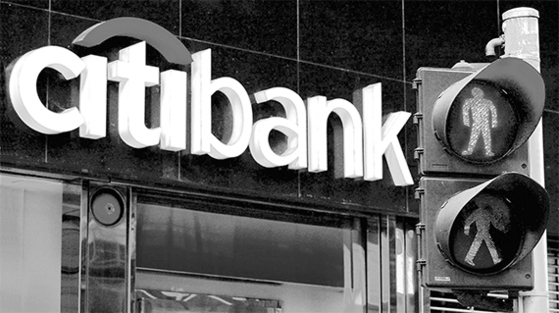There are reports that Citigroup is considering withdrawal from the Korean market.

Citibank. Central Photo DB
Bloomberg reported on the 19th (local time) that Citigroup is considering selling its retail banking business in the Asia-Pacific region, citing internal sources. Korea, Thailand, the Philippines, and Australia are the targets. If a decision to withdraw from the Korean market is made, Citibank Korea may be for sale. However, it is said that the final decision has not been made.
An official from Citibank Korea said in Bloomberg’s report that “we do not know anything other than the position of the headquarters regarding the sale related report.” The Citigroup headquarters said, “Citigroup has undertaken a cold and thorough strategy review, including the combination and mutual compatibility of each business.” . Citibank Korea union officials also said, “The issue related to the sale was first encountered through this foreign press.”
Citigroup has been undergoing restructuring since the 2008 global financial crisis. In particular, it is actively selling its retail banking business overseas. In 2014, 11 countries including Korea and Japan announced the sale of the retail finance sector. In Korea, Citigroup Capital Korea was sold, and Citibank and Citicard were maintained.

How much did the banks make? Graphic = Reporter Park Kyung-min [email protected]
Citibank Korea has been shrinking its retail banking sector since 2017. The number of stores from 133 in 2016 was 44 in 2017, and this year it has shrunk to 39. As non-face-to-face transactions became active, the intention was to reduce costs by reducing the number of stores, and instead focus on corporate finance and asset management (WM). “It is difficult to compete with the same strategy as other banks without color,” said the new president Yu Myung-soon, who took office in October last year. We have invested in and strengthened our capabilities.”
Although it has been reduced in size to improve profitability, the effect is not yet significant. Citibank Korea’s net income for the period reached 2794 billion won in 2019 from 243.7 billion won in 2017. Net profit for the third quarter of last year was 71 billion won, down 21% from the same period last year (90 billion won). On the other hand, Citibank’s market share fell from 1.9% (19,973.4 billion won) in 2017 to 1.63% (19,499.9 billion won) in 2019 based on the balance of loans.

Citibank Korea is shrinking. Graphic = Reporter Park Kyung-min [email protected]
Citibank is not the only one to worry about the retail banking sector. All domestic banks are struggling with low interest rates and digital transformation. The net interest margin (NIM), a source of profits in the retail banking sector, is declining due to continued low interest rates. The cost of financing for the loan has also decreased, but this is because the interest on the loan has decreased faster. KB Kookmin Bank’s NIM fell 0.16 percentage points from 1.67% in 2019 to 1.51% last year.
Non-face-to-face transactions are increasing, and the number of customers visiting bank counters is also decreasing. In October of last year, Arc Investment, an asset management company in the US, which became famous for its intensive investment in Tesla, cited the traditional banking industry (Physical Bank Branches) as a business group to avoid investment. This was because banks with branch-oriented sales networks were significantly disadvantageous compared to digital-based banks in terms of cost and acquisition of new customers. Seo Jeong-ho, a senior research fellow at the Korea Financial Research Institute, said, “In the retail finance sector, competition with businesses that have low-cost structures such as Internet banks is becoming fierce in the context of high maintenance costs such as stores. As it becomes difficult, attempts to find breakthroughs through WM and corporate finance will continue.”

Woori Bank is holding the opening ceremony of the first PCIB store’TCE Gangnam Center’, which opened in Yeoksam-dong, Seoul last October. Our bank
Each bank is also trying to reduce costs by closing existing stores. The number of domestic bank stores decreased from 7281 in 2015 to 6406 in 2020. The remaining stores are being reorganized around functions such as WM. An official from the banking sector in Korea said, “It is not easy for Korean banks to rapidly switch their stores centered on WM in terms of maintaining contact points with customers and relations with financial authorities. I know it’s being finished.”
Reporter Ahn Hyo-seong [email protected]
